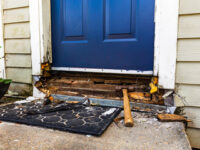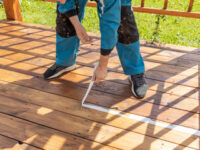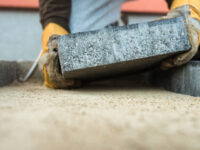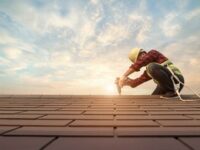Beyond the Boards: The Evolution of Deck Installation in Modern Homes
Deck installation is no longer just a backyard upgrade. It’s a calculated expansion of functional outdoor space. Homeowners now treat decks as seamless extensions of interiors. These spaces are designed with detail and long-term comfort in mind.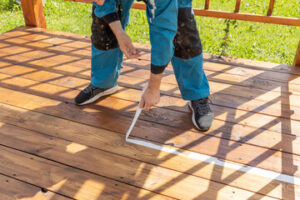
The trend is shifting toward modular deck systems. These are pre-engineered for quick assembly and customization. Homeowners can adjust layout and height with minimal tools. It allows creativity without the commitment of concrete. Contact Deck Builders Greensboro NC for professional help.
Floating decks are growing in popularity for uneven landscapes. These structures don’t require digging or major leveling. They adapt naturally to the terrain with stable frames. It saves time while respecting the yard’s original form.
Sustainability has become a deciding factor in materials. Installers now recommend reclaimed wood or composite options. These choices reduce environmental impact while ensuring durability. Clients favor aesthetics that don’t harm the planet.
Low-maintenance decking is highly sought after. Installers offer surfaces that resist rot, splintering, and fading. Minimal upkeep means more time to enjoy the deck. It fits the lifestyle of modern homeowners.
Hidden fastener systems are revolutionizing the surface finish. Deck boards appear smooth without visible nails or screws. This adds elegance and minimizes snag risks. It transforms the entire visual experience.
Lighting integration is now included in early planning. Installers embed LED strips or solar fixtures within steps and rails. This improves safety and ambiance during evening use. Decks become both useful and visually inviting.
Weather-responsive materials are gaining attention. Some surfaces stay cool under sunlight or resist water absorption. This creates a safer and more comfortable environment. Science meets outdoor design without compromise.
Smart tech is being integrated into deck layouts. Speakers, outlets, and security sensors are installed discreetly. The space becomes ready for entertainment or remote work. Homeowners enjoy high functionality outdoors.
Deck zoning is a new design strategy. Builders divide the space into lounging, dining, and activity areas. It allows multiple uses in one cohesive structure. This boosts value and maximizes outdoor real estate.
Installers are including privacy solutions as part of builds. These can be planters, lattice walls, or vertical gardens. It allows enjoyment without worrying about visibility. The space feels more like a personal retreat.
Some decks now incorporate built-in storage. Benches or stairs may double as compartments for tools and furniture. This solves the clutter problem creatively. It keeps the space neat while maintaining style.
Decks with flexible railings allow users to adjust for views or airflow. Sliding panels or retractable features are included. The homeowner controls their experience in real-time. Adaptability is becoming a core value in design.
Thermal insulation beneath deck boards is becoming common. It protects lower levels from heat or moisture. This is useful when decks are built over living areas. Comfort extends to the spaces below.
Curved decks are making a bold statement in installations. Rounded edges and spiral stairs offer softness and flow. They break the monotony of straight lines. It creates visual interest and movement.
Many decks are being planned with plant integration. Built-in beds or railing planters enhance the green feel. These soften wood-heavy spaces with natural life. The blend of architecture and nature is more intentional.
Roofed decks are becoming an extension of indoor rooms. These installations come with fans, lighting, and screens. They’re usable year-round regardless of weather. Functionality drives the investment forward.
Some installations are now treated like outdoor kitchens. Builders create frames for grills, sinks, and prep counters. The deck becomes the main hosting venue for guests. It elevates outdoor cooking to a whole new level.
Drainage systems under the boards prevent water pooling. These include slope designs and hidden gutters. Keeping the surface dry improves lifespan and safety. Moisture management is integrated from the start.
Deck surfaces now consider tactile experience. Clients choose between textured, brushed, or smooth finishes. Walking barefoot becomes a pleasant option. Sensory comfort is part of the design logic.
Fire features are being included during installation. Fire pits or linear burners are built right into the deck. These become gathering spots on cool nights. The design now anticipates social moments.
Decks are also being built to accommodate pets. Features like paw-friendly textures or pet enclosures are added. Homeowners include furry friends in outdoor planning. Comfort is for the whole family, not just humans.
Installers now factor in sound management. Some use materials that reduce footfall noise or echo. This creates a more peaceful environment. The space supports relaxation and conversation.
Pergolas and shade sails are being integrated into the initial framework. These provide adjustable shelter from sun or rain. They’re no longer afterthoughts but part of the core design. Comfort is built into the structure.
Climate-resilient finishes are now standard in extreme zones. Installers apply coatings that resist UV, snow, or salt. These extend deck life without regular refinishing. The investment remains protected year after year.
Deck safety has evolved with better railing options. Transparent panels, tension cables, or wide-top rails are offered. These blend beauty with required safety codes. Function and form coexist without compromise.
Some homeowners request deck designs for workouts. Areas are planned with enough flat space and shade. These support yoga, weights, or light cardio sessions. Outdoor fitness becomes part of daily life.
Built-in seating is replacing traditional outdoor furniture. Installers craft permanent benches that match the deck’s tone. These reduce clutter and offer continuity. They also provide storage or visual anchors.
Solar integration is growing beyond lights. Panels are installed on pergolas or shade structures. They power nearby outlets or devices. Energy independence starts in small but meaningful ways.
Deck heights are now designed with landscape views in mind. Builders measure sightlines before construction begins. Elevated decks maximize the outdoor experience. The view becomes part of the deck’s charm.
Maintenance tools are now offered as part of installation kits. Installers educate homeowners on proper upkeep. This reduces damage and prolongs material life. A well-informed owner protects their own investment.
Deck construction now involves more planning with interior design. Materials are chosen to match indoor flooring or trim. This creates a fluid transition between spaces. The home feels bigger and more connected.
Some decks are intentionally designed for seasonal use. Removable panels or curtains allow year-round flexibility. Owners can adapt the space to weather or mood. It’s no longer a summer-only structure.
Decks with elevation shifts allow creative layouts. Multiple levels separate uses without building walls. These add depth and encourage movement. The structure guides the way people gather and relax.
Safety sensors are being discreetly added to steps. These detect motion or changes in surface temperature. Alerts are sent to a mobile app when needed. It’s a quiet way to add safety for families or seniors.
Customizable lighting systems respond to time or weather. Light temperature and brightness adjust throughout the day. This supports circadian health and evening use. Lighting is part of the wellness approach.
Some decks now include soundproofing for urban environments. Materials absorb traffic or neighbor noise. The result is a peaceful outdoor haven. Even city dwellers can enjoy tranquil deck time.
Multi-use decks are replacing single-purpose patios. These support dining, play, gardening, and lounging at once. Each section is planned for flexibility. The deck grows with the homeowner’s lifestyle.
Non-wood materials are now more accepted. Concrete, tile, or metal are mixed into modern decks. These offer contrast and longevity. Style now borrows from multiple architectural influences.
Installers provide simulation apps for pre-visualization. Clients walk through designs in augmented reality. Decisions are made with full confidence. Technology ensures satisfaction before the first board is laid.
Decks designed for accessibility are on the rise. Ramps, wide paths, and handrails are standard features. These welcome all ages and physical conditions. Inclusion starts with thoughtful construction.
Heated deck surfaces are being explored in cold climates. Cables beneath boards melt snow and ice. Maintenance becomes easier and safer in winter. It’s an innovation driven by need.
Deck-to-pool transitions are designed for seamless movement. Non-slip zones and drain edges are installed precisely. Swimmers move safely and comfortably between spaces. Design supports both fun and security.
Hidden compartments for tools or speakers are built into frame edges. These keep decks clean and ready for use. Clutter is eliminated without removing access. Utility becomes invisible but powerful.
Long-term modularity allows future expansion. Homeowners can add platforms, steps, or walls later. The deck evolves as needs change. It’s an investment designed to grow with time.
Natural deck elements like pebbles or wood chips are used in edges. These soften the border between structure and landscape. Transition feels organic and inviting. Nature and architecture blend fluidly.
Deck building now respects tree roots and existing flora. Installers plan layouts to avoid harming mature plants. This keeps natural shade and wildlife habitats intact. It’s a harmony-first approach to outdoor design.
Clients are prioritizing decks that require minimal seasonal teardown. Furniture and décor are built to stay in place. Covers or screens protect without heavy storage needs. Convenience is built into every decision.
Modern deck installation is redefining how people live outdoors. It’s no longer just about extra space or wood boards. It’s about intentional, beautiful, functional design. And it’s evolving faster than ever before.

